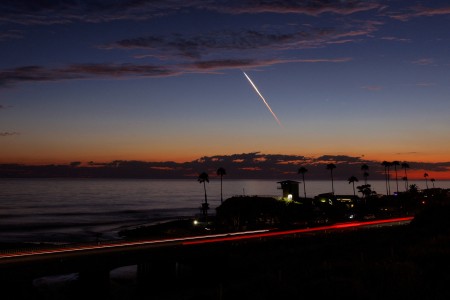By Joey Roulette
WASHINGTON (Reuters) -A second-stage engine on SpaceX’s Falcon 9 rocket suffered a rare malfunction in space during a routine Starlink mission on Thursday night, imperiling the satellites in the company’s first rocket failure in more than seven years.
Roughly an hour after Falcon 9 lifted off from the Vandenberg Space Force Base in California on Thursday night, the rocket’s second stage in space failed to reignite and deployed its 20 Starlink satellites into a much lower orbit than planned, where they risk burning up in Earth’s atmosphere.
The attempt to reignite the engine in space “resulted in an engine RUD for reasons currently unknown,” SpaceX CEO Elon Musk wrote on his social media platform X, referring to a tongue-in-cheek industry acronym for Rapid Unscheduled Disassembly that usually means explosion.
The botched mission of the world’s most active rocket breaks an impressive launch success streak that has maintained the industry dominance of SpaceX, a privately owned company valued at roughly $200 billion, which is relied upon by many countries and space companies to send their satellites into space.
Musk said SpaceX was updating the Starlink satellites’ software to force their on-board thrusters to fire harder than usual to avoid a fiery atmospheric reentry, but he noted “unlike a Star Trek episode, this will probably not work, but it’s worth a shot.”
“The satellite thrusters need to raise orbit faster than atmospheric drag pulls them down, or they burn up,” Musk said.
The failed engine firing occurred on Falcon 9’s 354th mission and marked the first Falcon 9 failure since 2016, when a rocket exploded on a launch pad in Florida and destroyed its customer payload, an Israeli communications satellite.
(Reporting by Joey Roulette; Editing by Sharon Singleton)














